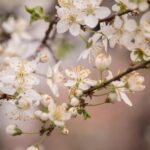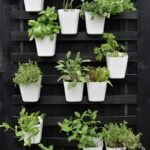A well-designed front yard can greatly enhance the curb appeal of your home, making it inviting and beautiful. When it comes to a long front yard, the landscaping possibilities are endless. In this article, we will explore various long front yard landscaping ideas to help you make the most of your outdoor space while creating a welcoming environment for you and your guests.
When considering long front yard landscaping ideas, it’s essential to assess the available space and understand its potential. From there, choosing the right plants and incorporating hardscaping elements can create visual interest and add character to your front yard. Lighting, water features, and sustainability are also crucial factors in creating an inviting and relaxing outdoor space.
Whether you’re looking for low-maintenance options or seasonal maintenance tips, this article will provide valuable insights into designing and maintaining a beautiful long front yard. By the end of this article, you’ll be equipped with practical ideas to bring your long front yard landscaping visions to life. So let’s dive in and explore the world of possibilities for transforming your long front yard into a captivating outdoor oasis.
Assessing Your Long Front Yard
When it comes to long front yard landscaping ideas, the first step is to assess and understand the space you have to work with. A long front yard offers a unique opportunity to create a beautiful and inviting entrance to your home, but it also presents its own set of challenges. By taking the time to thoroughly assess your front yard, you can make more informed decisions about how to design and landscape the space.
Understanding the Layout
Before diving into any landscaping project, it’s important to carefully consider the layout of your long front yard. Take note of any existing features such as trees, pathways, or focal points that you may want to incorporate into your design. Additionally, pay attention to any areas that may need special attention, such as sloped areas or drainage issues.
Considering Scale and Proportion
With a long front yard, scale and proportion become crucial elements to consider in your landscaping. In order to create a cohesive and visually appealing design, you’ll need to carefully consider the size of plants and hardscaping elements in relation to the overall space. For example, large trees or shrubs may be necessary in order to prevent the front yard from feeling empty or disproportionate.
Determining Functionality
Another important aspect of assessing your long front yard is determining how you want the space to function. Are you looking for a low-maintenance landscape? Do you want areas for entertaining or relaxing? Understanding how you want to use the space will help guide your decisions when it comes time to select plants, hardscaping elements, and other design features for your long front yard landscaping project.
Choosing the Right Plants for Long Front Yard Landscaping
When it comes to choosing the right plants for long front yard landscaping, there are several factors to consider. First, you’ll need to take into account the climate and local weather conditions. Different plants thrive in different environments, so be sure to choose species that are well-suited to your area’s climate. Additionally, consider the amount of sunlight that your front yard receives throughout the day. This will also help determine which plants will flourish in your landscaping.
Another important consideration when selecting plants for your long front yard is the maintenance they require. If you’re looking for low-maintenance options, consider choosing native plants that are well-adapted to your area. These typically require less watering and upkeep compared to non-native species. You may also want to think about how much time and effort you’re willing to devote to maintaining your landscaping when choosing plants.
Incorporating a variety of colors, textures, and heights can also add visual interest and depth to your long front yard landscaping. By selecting a mix of flowering plants, shrubs, and trees, you can create a visually dynamic and aesthetically pleasing landscape.
Layering different types of plants can also help create a more natural and cohesive look for your long front yard. By carefully considering these factors, you can choose the right plants that will enhance the beauty of your long front yard landscaping while minimizing maintenance requirements.
Creating Visual Interest With Hardscaping in the Front Yard
When it comes to long front yard landscaping ideas, hardscaping can be an excellent way to add visual interest and structure to the space. Hardscaping involves the use of hard materials such as stone, concrete, wood, or metal to create patios, pathways, retaining walls, and other structures in your front yard. By incorporating hardscaping elements into your landscaping design, you can enhance the overall aesthetic appeal of your long front yard while also adding functionality and practicality.
Choosing the Right Hardscaping Elements
The first step in using hardscaping for your long front yard is to choose the right elements that will complement the existing landscape and architecture of your home. Consider factors such as the style of your house, the layout of your front yard, and any existing features that you want to highlight or conceal.
For example, if you have a long driveway leading up to your home, installing a decorative paver or gravel driveway can instantly elevate the curb appeal of your property.
Creating Functional Spaces
In addition to aesthetics, hardscaping can also help create functional outdoor spaces in your front yard. For instance, you can build a cozy seating area with a patio or deck where you can entertain guests or relax with family. Adding a pergola or arbor over this seating area can provide shade and privacy while also adding architectural interest to your front yard.
Maintaining Balance With Softscaping
While hardscaping is essential for creating structure and visual interest in a long front yard, it’s crucial to maintain balance by incorporating softscaping elements such as plants and flowers. Strategic placement of trees, shrubs, and flower beds can soften the hard lines of hardscaping and add color and texture to your front yard. This combination of hardscaping and softscaping will create a well-balanced and visually appealing landscape for your long front yard.
Incorporating Lighting to Enhance the Long Front Yard
When it comes to long front yard landscaping ideas, incorporating lighting can truly enhance the overall look and feel of the space. Lighting not only adds a layer of safety and security to your front yard but also creates a visually appealing atmosphere. Here are some ideas for incorporating lighting into your long front yard landscaping:
- Pathway Lighting: Install lights along the pathway leading up to your home to guide visitors and create an inviting entrance.
- Uplighting: Use uplighting to highlight architectural features of your home or tall trees in the front yard, adding depth and drama to the landscape.
- Spotlights: Position spotlights strategically to showcase specific areas of interest, such as a colorful flower bed or an eye-catching sculpture.
In addition to these ideas, consider using string lights or lanterns to add a warm and welcoming ambiance to your long front yard. It’s important to strike a balance between functional and decorative lighting elements to achieve the desired look.
Another popular option for enhancing the long front yard with lighting is installing low-voltage LED fixtures. These energy-efficient lights not only save on electricity but also provide ample illumination for the entire space. With the wide range of styles and designs available, you can easily find fixtures that complement your overall landscaping theme.
By incorporating appropriate lighting into your long front yard landscaping design, you can create an enchanting outdoor space that is both inviting and visually stunning. Whether you prefer a soft, romantic glow or a bright, modern ambiance, there are plenty of options to choose from when it comes to enhancing your long front yard with lighting.
Low-Maintenance Long Front Yard Landscaping Ideas
When it comes to long front yard landscaping, low-maintenance ideas can be a game-changer. Not everyone has the time or energy to devote to constant upkeep, so opting for low-maintenance landscaping options can allow you to enjoy a beautiful front yard without the added stress of high-maintenance plants and features. Here are some low-maintenance long front yard landscaping ideas to consider:
- Choose native plants: Native plants are well-adapted to the local climate and soil, making them easier to maintain without excessive watering or fertilizing.
- Install an automated irrigation system: Save time and effort by installing an automated irrigation system that ensures your plants receive the right amount of water without constant manual intervention.
- Use mulch: Mulch not only helps retain moisture in the soil but also suppresses weeds, reducing the need for ongoing weeding and maintenance.
In addition to plant choices and watering systems, hardscaping elements can also contribute to a low-maintenance front yard. Consider incorporating features such as pathways, gravel beds, or decorative rocks to minimize the need for regular mowing or trimming. By strategically placing hardscaping elements, you can create visual interest while minimizing upkeep.
Lastly, when incorporating lighting into your long front yard landscaping design, opt for low-maintenance options such as solar-powered lights. These require minimal maintenance and no electrical wiring, making them a convenient choice for illuminating your front yard without adding to your maintenance workload. With these low-maintenance landscaping ideas, you can create a stunning long front yard that enhances curb appeal without requiring constant attention and care.
Incorporating Water Features for a Relaxing Front Yard
Water features can add a sense of tranquility and relaxation to any outdoor space, and a long front yard is no exception. Whether it’s a small fountain, a pond, or a flowing stream, the sound of running water can create a peaceful atmosphere that welcomes guests and provides a calming escape for homeowners.
When considering incorporating water features into your long front yard landscaping, it’s important to assess the size and layout of your space. A smaller front yard may benefit from a simple fountain or birdbath, while larger yards can accommodate larger water features such as ponds with aquatic plants or even small waterfalls. The key is to choose something that complements the overall aesthetic of your landscaping while also providing a sense of tranquility.
In addition to creating a relaxing atmosphere, water features can also attract wildlife such as birds and butterflies, adding another layer of beauty and interest to your front yard. With the right design and placement, incorporating water elements into your long front yard landscaping can transform an ordinary space into an oasis of calm and serenity.
| Water Feature | Recommended Size |
|---|---|
| Fountain | Small to Medium |
| Pond | Medium to Large |
| Stream or Waterfall | Large |
Sustainable and Eco-Friendly Long Front Yard Landscaping Ideas
When it comes to long front yard landscaping ideas, sustainability and eco-friendliness are becoming increasingly important. This means using plants that require less water, reducing chemical pesticide and fertilizer use, and making choices that benefit the environment. There are numerous sustainable and eco-friendly landscaping ideas for long front yards that can not only enhance the beauty of your outdoor space but also contribute to a healthier planet.
One way to achieve sustainable landscaping in your long front yard is by selecting native plants. Native plants are well adapted to the local climate and soil conditions, which means they require less maintenance, watering, and fertilization. Additionally, they provide habitat and food for local wildlife, promoting biodiversity. Using native plants also reduces the need for chemical inputs as they are naturally resistant to pests and diseases.
Another eco-friendly idea for long front yard landscaping is incorporating composting into your gardening practices. Composting organic waste such as kitchen scraps and garden clippings creates nutrient-rich soil amendment that can be used to enrich the soil in your front yard. This reduces the need for synthetic fertilizers while also diverting organic waste from landfills. Not only is composting beneficial for your landscape, but it also contributes to reducing greenhouse gas emissions associated with landfill decomposition.
Implementing sustainable irrigation practices is essential for eco-friendly long front yard landscaping. Consider installing a drip irrigation system or rainwater harvesting system to efficiently water your plants while minimizing water waste. These systems can be programmed to deliver water directly to the roots of plants, reducing evaporation and runoff. By using water wisely in your landscaping, you can help conserve this precious resource while still maintaining a beautiful long front yard.
By embracing sustainable and eco-friendly long front yard landscaping ideas, you can create a visually stunning outdoor space while minimizing environmental impact. Whether it’s through planting native species, practicing composting, or implementing efficient irrigation methods, every small effort contributes to a more sustainable future for our planet.
Seasonal Maintenance Tips for Long Front Yard Landscaping
Caring for a long front yard landscaping design requires regular seasonal maintenance to keep it looking its best throughout the year. In the spring, start by cleaning up any debris that may have accumulated over the winter months. This includes removing dead leaves, branches, and any other clutter that may have gathered in the yard. It’s also a good time to assess the condition of your plants and flowers and make any necessary replacements or additions.
During the summer months, focus on watering your plants adequately, especially during periods of drought or extreme heat. Pruning is also essential during this time to encourage healthy growth and maintain the shape of your shrubs and trees. Additionally, be mindful of weeds and ensure they are promptly removed to prevent them from overcrowding your landscaping.
As fall approaches, it’s important to prepare your long front yard for the cooler months ahead. Raking leaves is crucial during this time to keep your yard looking tidy, but fallen leaves can also be used as mulch for your garden beds. Trim back any perennials and plants that require cutting back in preparation for winter, while also planting bulbs if desired.
| Season | Maintenance Tasks |
|---|---|
| Spring | Clean up debris, assess plant condition, make replacements/additions |
| Summer | Watering, pruning, weed removal |
| Fall | Raking leaves, trim back plants, planting bulbs |
Conclusion
In conclusion, there are numerous possibilities for transforming a long front yard into a stunning and inviting outdoor space. Whether you prefer a low-maintenance design, a sustainable and eco-friendly approach, or a more elaborate landscaping project, the key is to understand the space and choose the right plants and hardscaping elements to create visual interest.
By carefully assessing the size and layout of your long front yard, you can determine the best way to incorporate features such as water elements and lighting to enhance the overall ambiance. Additionally, considering the seasonal maintenance requirements will ensure that your landscaping ideas remain vibrant and appealing throughout the year.
Whether you decide on a serene retreat with water features or a more contemporary design with sustainable elements, implementing long front yard landscaping ideas has the potential to significantly enhance your property’s curb appeal while providing an enjoyable outdoor space for relaxation and entertainment. With careful planning and attention to detail, you can bring your long front yard landscaping ideas to life in a way that reflects your personal style and complements your home’s architecture.
Frequently Asked Questions
How Do You Landscape a Large Front Lawn?
Landscaping a large front lawn can be a bit challenging, but with careful planning and design, it can be done effectively. Consider starting by mapping out the different areas of the lawn and deciding what types of plants, trees, or shrubs you want to include. It’s important to create focal points and use different layers of height to add visual interest.
Using a variety of colors, textures, and shapes in your plant selections can also make a big impact on the overall look. Additionally, incorporating pathways, lighting, and other hardscape elements can help break up the space and make it more visually appealing.
How Do I Landscape My Front Yard on a Budget?
Landscaping your front yard on a budget is definitely possible with some smart choices and creative thinking. One way to save money is by choosing low-maintenance plants that are native to your area, as they tend to require less water and care. Another cost-effective option is to create defined garden beds using inexpensive materials like mulch or gravel instead of expensive hardscaping elements.
You can also consider buying smaller plants or starting from seeds rather than investing in larger, more mature plants. Finally, doing as much of the work yourself as possible can help save on labor costs.
What Is the Cheapest Landscape Fill?
When it comes to landscaping fill material, one of the cheapest options available is typically topsoil. While it may not have all the nutrients necessary for optimum plant growth like more specialized soil blends do, topsoil is still a popular choice for adding volume to landscape beds or raised garden areas without breaking the bank.
Another affordable option for landscape fill material is compost – it improves soil structure while also being relatively inexpensive compared to other options like peat moss or potting soil. Ultimately, choosing the right fill material will depend on your specific landscaping needs and budget constraints.

Welcome to my gardening blog! I am passionate about plants and enjoy sharing my knowledge and experiences with others. In this blog, I will write about everything related to gardening, from tips on how to get started to updates on my own garden projects.





